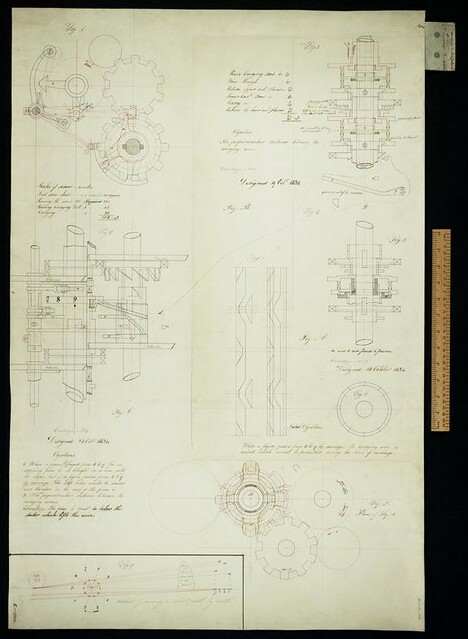
This is a sketch by Charles Babbage of his Analytical Engine. Figure 1 is the plan, Figure 2 is the elevation, Figure 3 is Carriage No. 4. It is dated October 25th, 1834.
Please see the Babbage Papers archival collection at the Science Museum, London for more sketches of his various engines, as well as other materials produced by Babbage.

Image of a part of Charles Babbage's Analytical Engine, which he proposed in 1834.
Courtesy of the Science Museum Group.

Pictured is a Hollerith tabulating machine, created by Herman Hollerith in 1888 as a way to help process U.S. census data.
Photo courtesy of Computer History Museum.

Reproduction of Herman Hollerith's 1890 tabulating machine - built in 1981.
Photo courtesy of Computer History Museum.

Hollerith tabulating machines were first used to help process data from the 1890 U.S. Census.
Courtesy of the National Museum of American History

Pictured is a 45 column horizontal electrical sorting machine ca. 1920s.
Courtesy of Science Museum Group.

Data to be processed by the Hollerith machine needed first to be punched onto cards which would then be fed into the machine.
Courtesy of Computer History Museum

Punched cards were used to feed the information to be processed by computing machines into the machines.
Courtesy of Computer History Museum.

Picture of Franklin Roosevelt in front of a Bush Differential Analyzer, an analogue computing machine that could solve an entire class of mathematical problems, ca. 1930.
Courtesy of Computer History Museum.
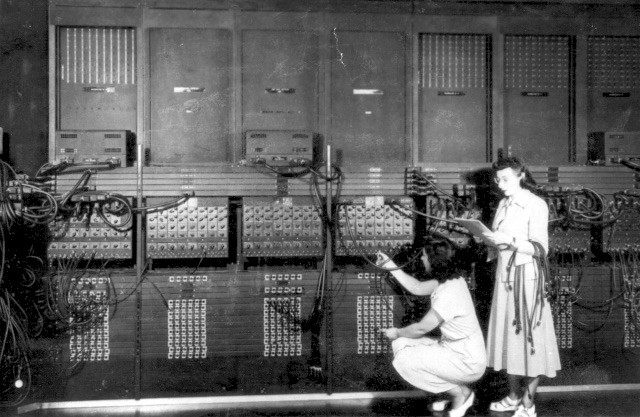
Ruth Lichterman and Marlyn Wescoff are re-wiring ENIAC to run a new program.
Courtesy of U.S. Army

This is the main segment of a mercury delay line tube from the EDSAC machine, which was the first electronic, stored program computer to become operational in 1949 at Cambridge University.
Courtesy of Science Museum Group.

IBM Selective Sequence Electronic Calculator.
Photo courtesy of Computer History Museum.

Aerial view of original ERA plant located on Minnehaha Avenue; image from 1952.
Courtesy of the Charles Babbage Institute Archives at the University of Minnesota.

The ERA 1101 computer was the commercial version of ERA's classified Atlas I codebreaking machine. Seen here is Earl Joseph sitting in front of the ERA 1101.
Slide #2733
Courtesy of Lockheed Martin Collection, Dakota County Historical Society.

ERA engineer Don Weidenbach pictured with drum memory units in 1952.
Courtesy of the Charles Babbage Institute Archives at the University of Minnesota.

Magnetic drum memory was one of several methods to store data with early computing machines. Seen here are 4 different models of drum memory, circa 1950s.
Slide #1186
Courtesy of Lockheed Martin Collection, Dakota County Historical Society.
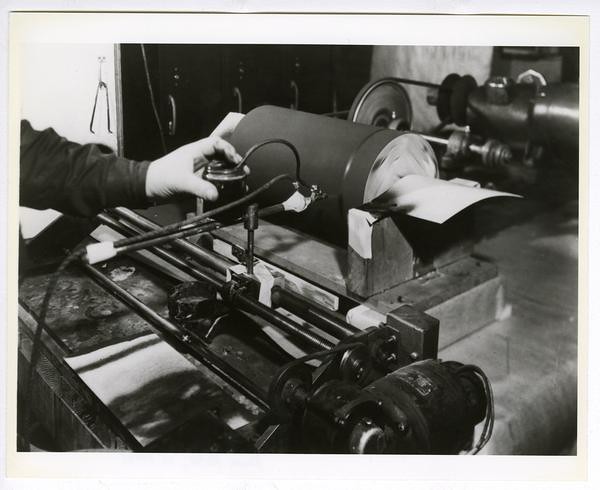
Application of magnetic oxide drum rotor in 1952.
Courtesy of the Charles Babbage Institute Archives at the University of Minnesota.
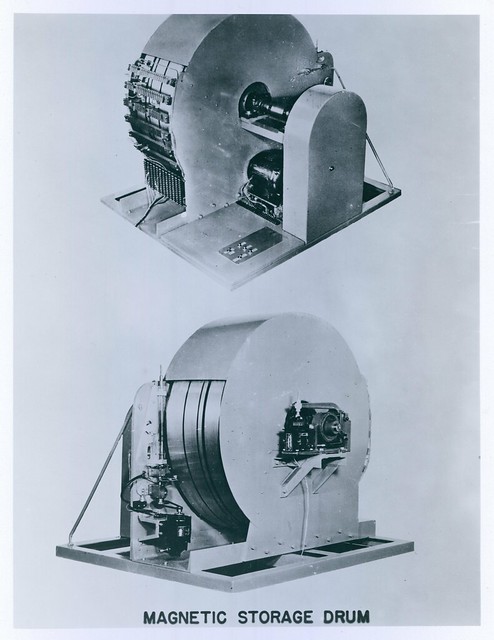
Courtesy of Lockheed Martin Collection, Dakota County Historical Society.
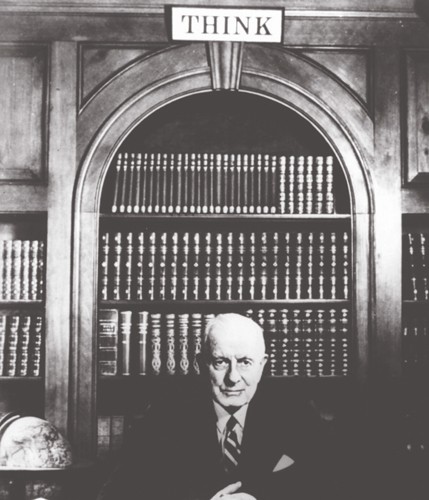
Thomas Watson Sr., head of IBM, pictured in front of his famous THINK slogan. Photo is ca. 1948.
Courtesy of Computer History Museum.
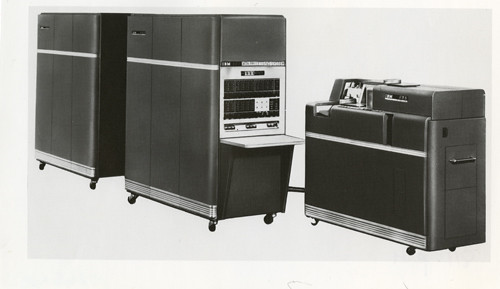
The IBM 650 was announced on July 14, 1953. The photo is ca. 1954.
Courtesy of Computer History Museum.

The IBM 650, released in 1953, used magnetic drum memory to store data.
Courtesy of Computer History Museum

Engineers in the Minnehaha ERA plant in 1952.
Courtesy of the Charles Babbage Institute Archives at the University of Minnesota.

The production of antenna couplers, which connected an airplane's internal radio to an external antenna in order to extend radio transmission distances, was an important source of money for ERA.
Photo courtesy of the VIP Club; originals housed at Charles Babbage Institute and Dakota County Historical Society
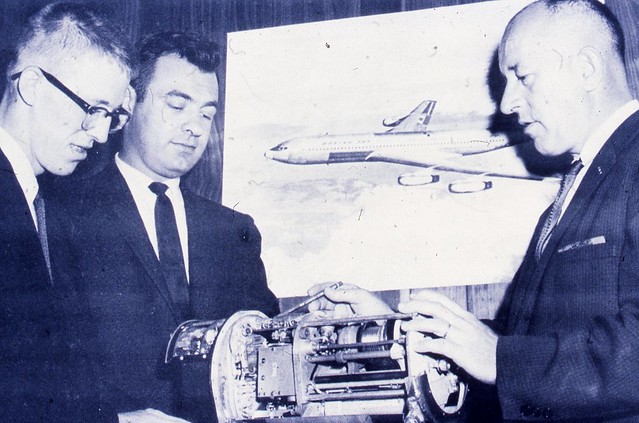
Sperry Rand UNIVAC antenna coupler with 3 men standing in front of a Boeing 707 image. Antenna couplers were an important component of Boeing aircrafts.
Slide #2754
Courtesy of Lockheed Martin Collection, Dakota County Historical Society.

Engineering Research Associates's ERA 1101, the commercial version of the company's codebreaking machine, the Atlas I. Photo is from 1951.
Courtesy of the Charles Babbage Institute Archives at the University of Minnesota.
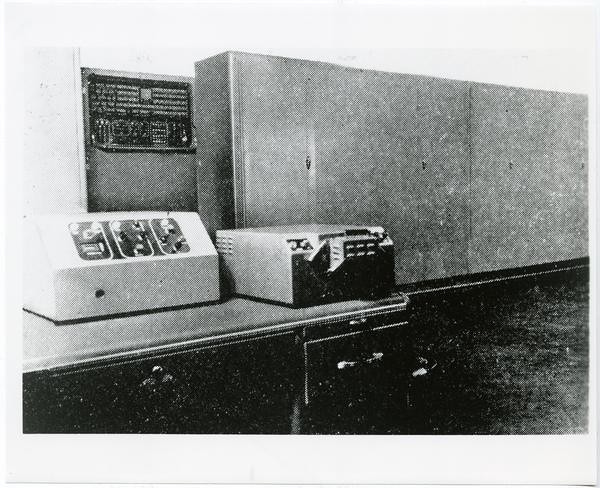
Engineering Research Associates's ERA 1101 machine; photo from 1951.
Courtesy of the Charles Babbage Institute Archives at the University of Minnesota.
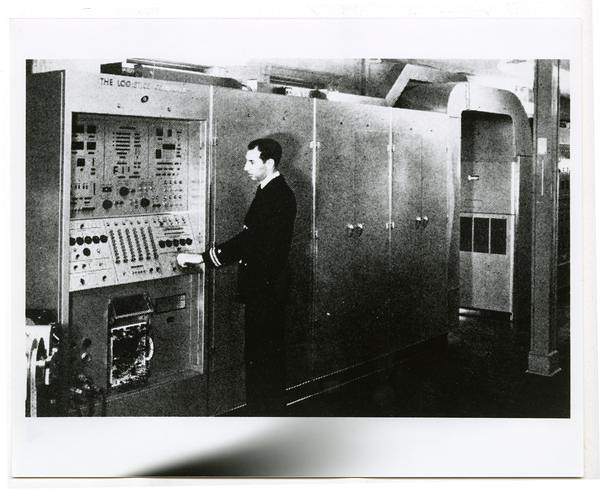
Atlas I control panel, ERA's code breaking machine developed in a time. Photo from 1950.
Courtesy of the Charles Babbage Institute Archives at the University of Minnesota.

Artist rendering of the ERA 1103, the commercial, declassified version of the ERA Atlas II codebreaking machine, from 1953.
Available through both the Computer History Museum and the Charles Babbage Institute.

The UNIVAC Plant 2 building was originally the Engineering Research Associates building, before it was purchased by Remington Rand in the early 1950s.
Slide #1138
Courtesy of Lockheed Martin Collection, Dakota County Historical Society.

Courtesy of Lockheed Martin Collection, Dakota County Historical Society.
Browse through a collection of images compiled from various archives of historical computing resources.

